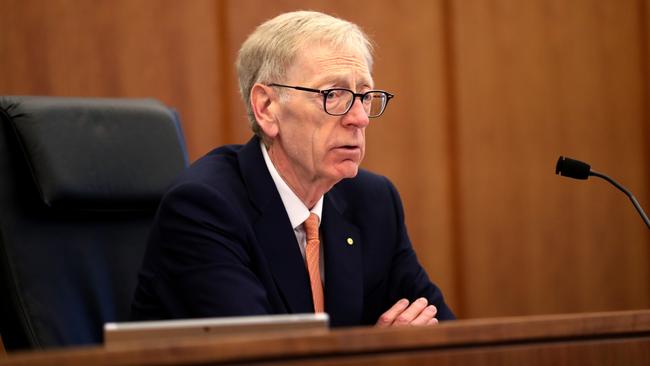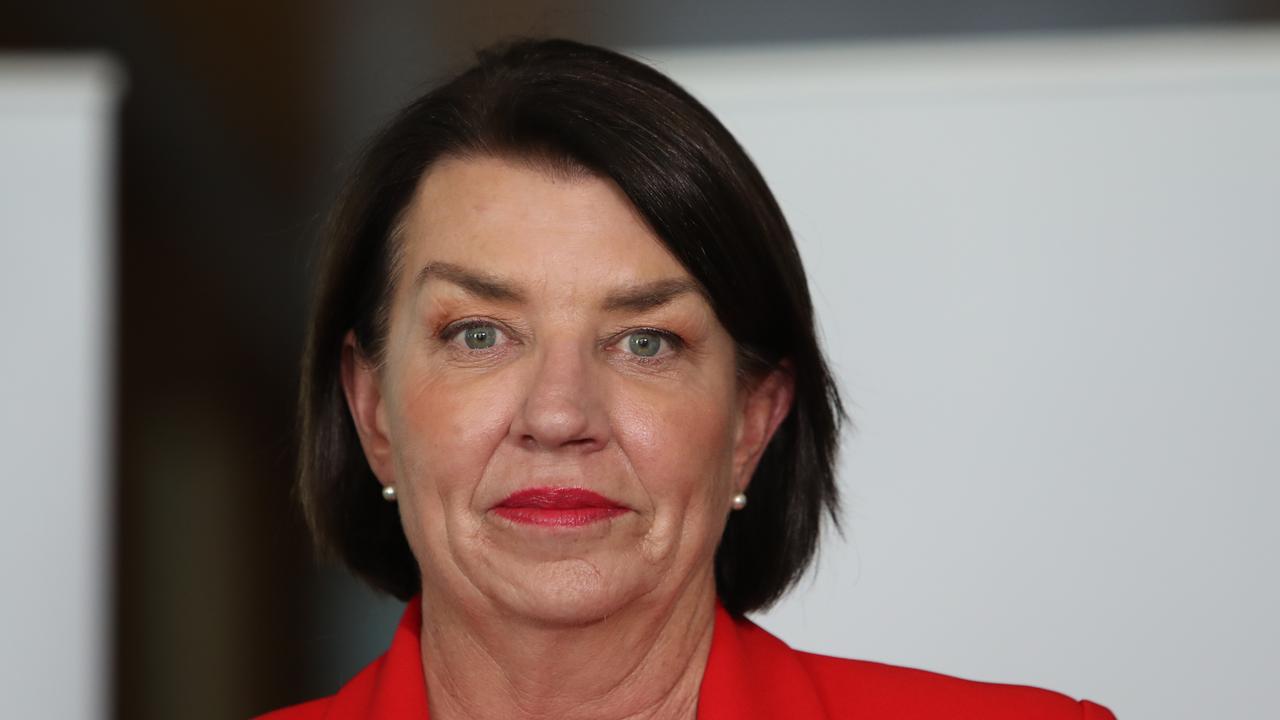Banking royal commission: Hayne to lift lid on ‘confessions’
The royal commission is believed to be close to releasing the original confession statements requested early this year.

Further ignominy awaits the nation’s biggest financial services companies with the royal commission believed to be close to releasing the original confession statements requested by Kenneth Hayne early this year.
So far, the practice has been to only release extracts, when the relevant misconduct or poor behaviour has been examined in a public hearing.
However, exposure of the full rap sheet for each company will pile more shame on the sector, which was roundly condemned in commissioner Mr Hayne’s 1000-page interim report last Friday for its “pursuit of short-term profit at the expense of basic standards of honesty”.
A spokesman for the royal commission declined to comment on any imminent release of the original submissions.
“The information provided by individuals and entities may be published by the commission during its proceedings or in its reports,” the spokesman said.
“This will be a matter for the commission.”
A senior industry executive said the risk of class actions would inevitably increase if the submissions were released, as they contained damaging admissions.
“But if you were to ask me if they were drafted with that prospect in mind, I’d have to say: ‘Yes, they were’,” he said.
Mr Hayne said in his interim report that he wrote to 61 institutions last December, giving them until January 29 to provide written responses on any misconduct or behaviour falling short of community expectations since January 1, 2008.
When the responses proved to be unsatisfactory, the commissioner said he wrote again to a number of entities, including the four major banks and AMP, asking for a detailed and comprehensive list of all their misconduct in the past five years.
Both Commonwealth Bank and National Australia Bank, he said, had found it difficult to comply, citing the need to assemble information from many different sources.
This meant neither bank could identify how, or to what extent, it was failing to comply with the law.
“And if that is right, neither the senior management nor the board of the entity could be given any single coherent picture of the nature or extent of failures of compliance; they could be given only a disjointed series of bits of information framed by reference to particular events,” Mr Hayne said.
“Information presented in that way points too easily towards explaining what has happened as “a small number of people choosing to behave unethically, or as the product of ‘people, policies and processes that existed with a pocket of poor culture in that area at that time’.”
Meanwhile, ASIC is getting closer to launching legal proceedings against AMP over the wealth manager’s interactions with the regulator in the fees-for-no-service debacle. As flagged by The Australian, ASIC launched Federal Court proceedings last month against two of National Australia Bank’s wealth entities for charging $100 million in fees to superannuation clients for services that were not provided.
The final bill for the industry-wide scandal could exceed $1 billion. While AMP is also in ASIC’s crosshairs over the same issue, the pending legal case is believed to centre on the company’s dealings with the watchdog.
Mr Hayne said in his interim report that the interactions covered two areas — statements by AMP about its ongoing service-fee conduct, and representation of a report by the company’s law firm, Clayton Utz, as independent, despite the report going through 22 drafts.
In relation to the first issue, the commissioner said AMP provided ASIC with information that was false and misleading, even when it had internal legal advice that charging fees without providing the required service was illegal.
“Senior management and executives who contributed to the misleading of ASIC over a two-year period had knowledge of the true extent and nature of the conduct, and, in at least some cases, were warned by junior staff about it being a breach, but continued with a misleading narrative to ASIC,” Mr Hayne said.
The commissioner also said that AMP may have represented to ASIC in an October 2017 meeting that the Clayton Utz report was “external and independent”.
“In particular, having regard to the number and nature of the changes made to drafts of the report, it may be open to conclude that AMP knew that the report was not an independent report,” he said.
“Conduct of that kind, if established, might be misconduct.”



To join the conversation, please log in. Don't have an account? Register
Join the conversation, you are commenting as Logout